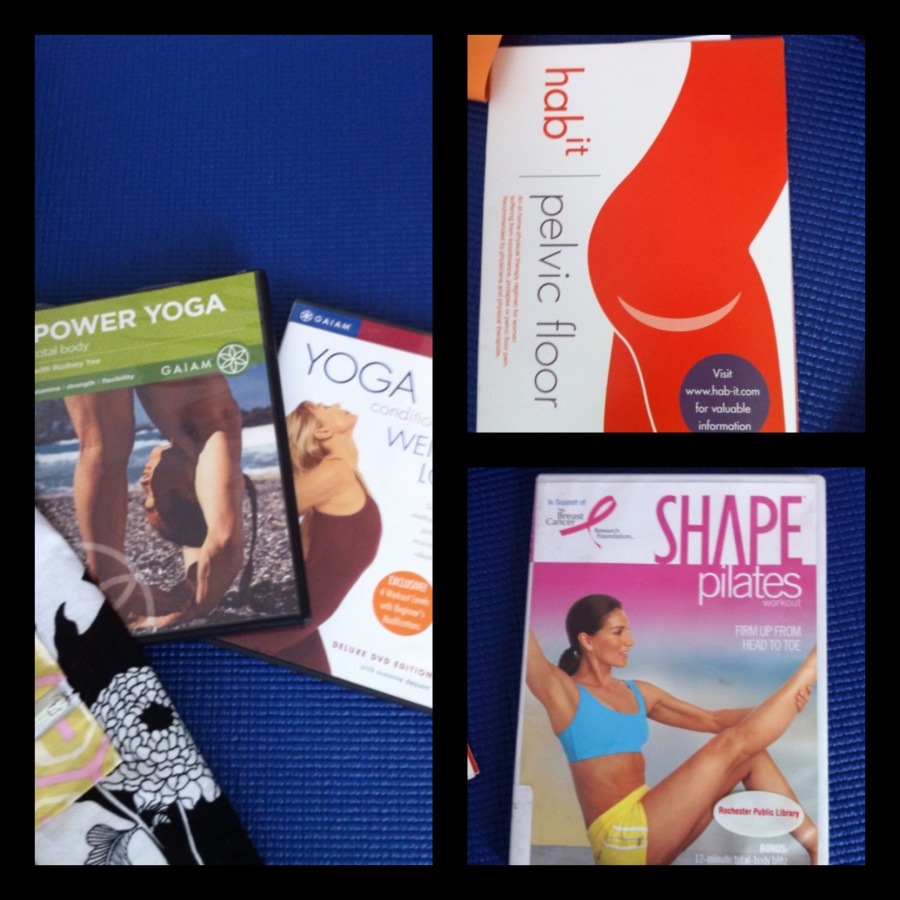Making the Core and Pelvic Floor a Priority
I am not a licensed physical therapist or a certified personal trainer. The exercises in this post were recommended to me by a people who are. If you have weakness in your pelvic floor, imbalance in your hips or other running related injuries I would HIGHLY (Bold and italics AND all caps...that's a lot.) recommend that you see a women's health physical therapist who specializes in pelvic floor rehabilitation. Consider it an investment in yourself, your body and your future as a runner, a mother and a woman.
I am back on the rehab wagon with a vengeance after coming to the conclusion that strengthening my pelvic floor and core are essential to my running goals. All to often (like, every time) I set a running goal, I get very focused on my running and don't make time for any strength training, stretching or foam rolling. Tightness builds and I don't deal with it until I've had to stop running due to an injury.
I am just coming off a nine days of no running due to some tightness and pain in the joint of my big toe caused by weakness in my pelvic floor/hips. I eased into a run on Saturday with an easy three miles but pelvic floor and core work will remain my focus for the next few weeks the rest of my life. Here are some of the things I've been doing.
Pelvic Floor:
I continue to do the exercises from the Habit-It DVD and those prescribed by my physical therapist, Cristin Zaimes and have started to incorporate a Pilates DVD that I checked out from my local library. (Side note: the library is a great resource for fitness DVDs. I love that there is no commitment. I can check it out at no cost and if I really like it I can find it online and purchase it. I hate buying a fitness DVD and realizing that I hate the workout.) The Hab-It video is comprised of Kegels and exercises that strengthen the pelvic floor like bridge pose, clam-shells, leg lifts and much more. A lot of the exercises are the same as the ones that my physical therapist recommended with one big exception: she modified the full motion exercises with smaller, more concentrated motions. My PT was able to identify when I stopped using the correct muscles and started compensating for weakness with the "wrong' muscles. It is easy for me to "power through" a lot of the motions especially the bridge pose: it isn't hard to lift your hips off the ground. But what I couldn't see was that after lifting a few inches my right hip dipped and "gave out" causing other muscles to compensate for the weakness. At a certain point I lost stability and engagement of the pelvic floor, multifidi and transverse abs and started compensating with larger muscles like my quads and hamstrings. My PT had me modify the motions: instead of doing a full bridge I was doing a quarter bridge so that all the correct muscle would be engaged. Same with a squat, she had me doing a quarter squat instead of a full squat so that I could learn to "turn on" the right muscles and keep them "on." This is why I would recommend seeing a PT. Their eye is trained to see weakness and imbalance. I have a tendency to think that if I'm not working up a sweat I'm not having a "problem" with doing the exercise. But there were all kinds of "problems" with my bridge and squat and number of other exercises; there was weakness that I couldn't detect.
As I do the Pilates DVD I try to be conscious of when the muscles of my pelvic floor/basket turn off. I pause the DVD, refocus and modify the movement until I can feel all the muscles turned "on" then I try it again a few times and re-start the DVD. I could easily power through all the pilates moves, but that would defeat the purpose. I need concentrated, quality movements that target the weakness in my hips and pelvic floor.
Core:
These two videos workouts were recommended by my sister and licensed physical therapist, Danielle. I've been doing these core workouts four or more times a week. I also slow down and modify the moves if I feel like I'm compensating for any weakness in the pelvic floor.
http://www.youtube.com/watch?v=rSJ-CTNsom4
http://www.youtube.com/watch?v=EaI9sKznHos
I'm not sure how long it will take to correct the imbalance in the my hip strength and my pelvic floor probably won't be completely back to normal until I stop breastfeeding. My hope is that I can continue to run and strengthen at the same time, but the strengthening will have to take a priority because it supports the running.
When you're not running, what workouts do you enjoy?
--Sarah


